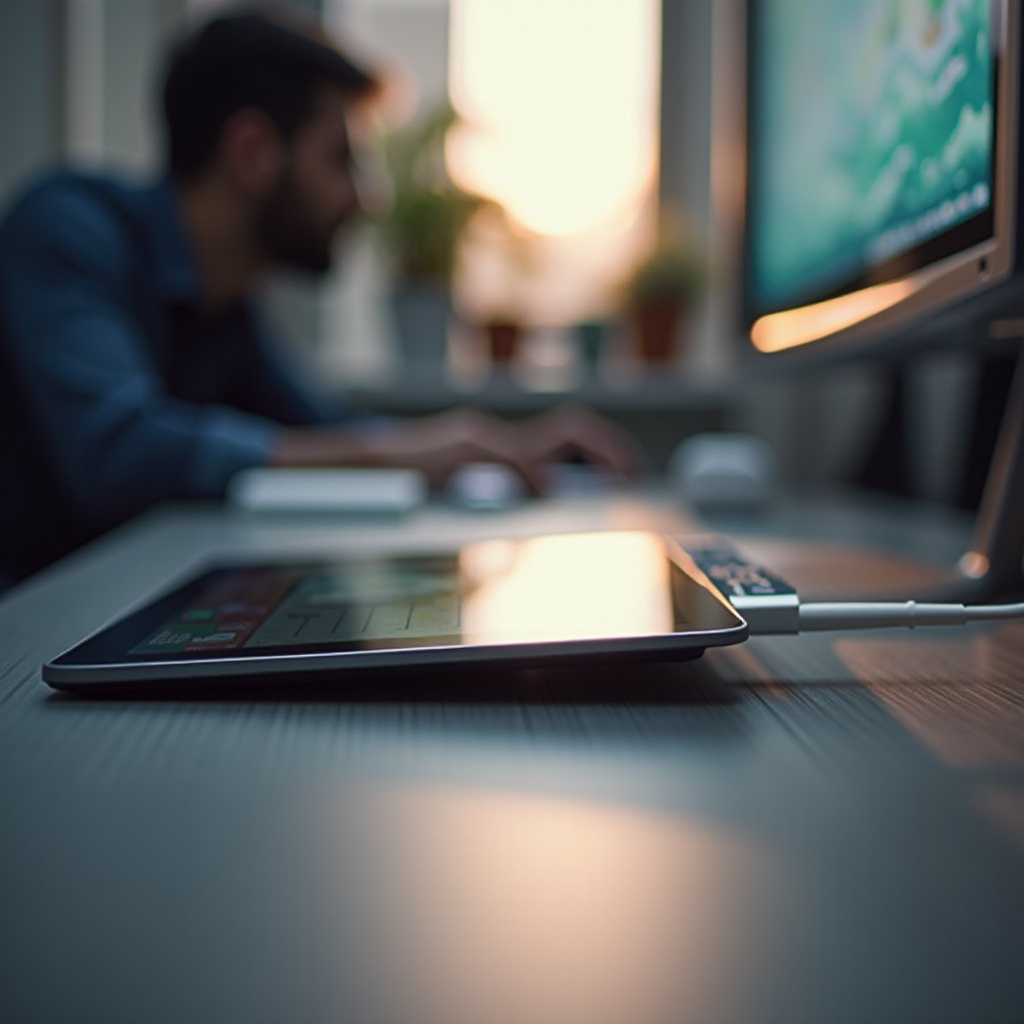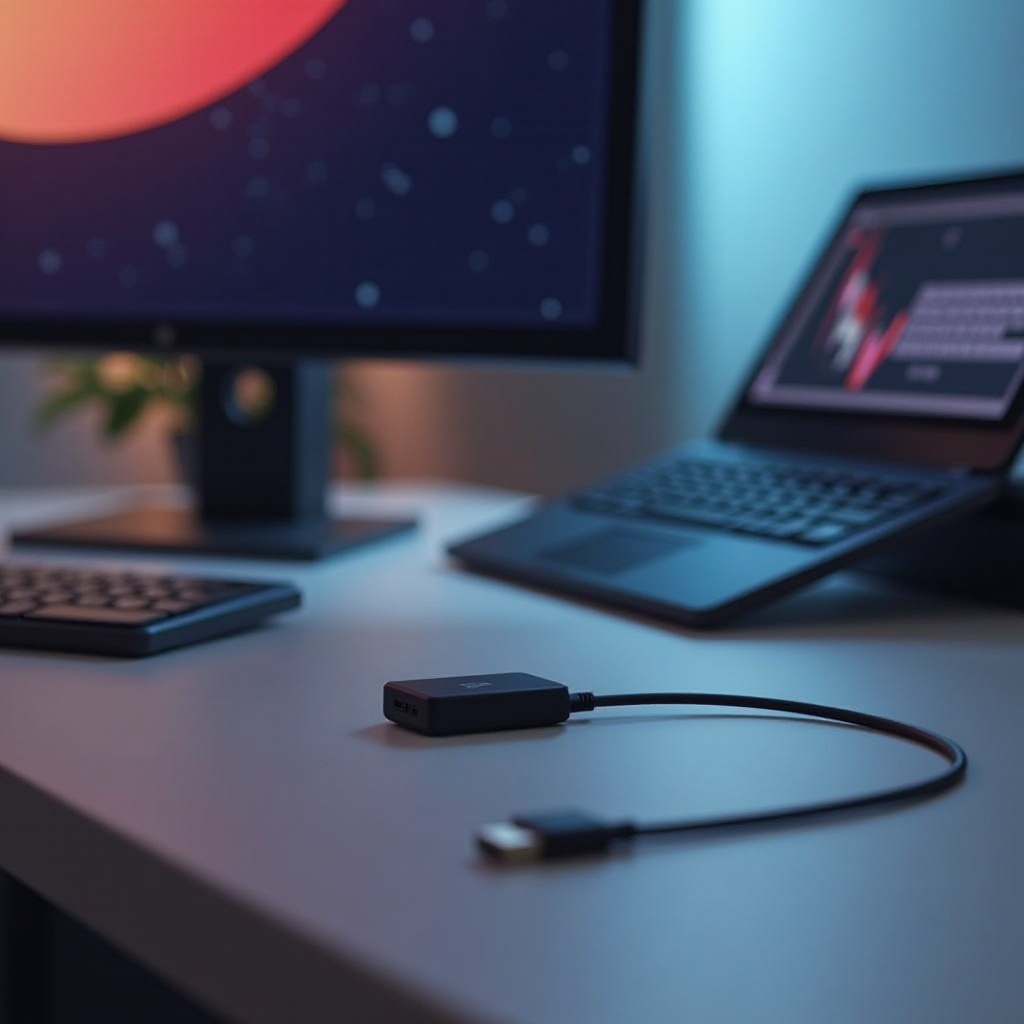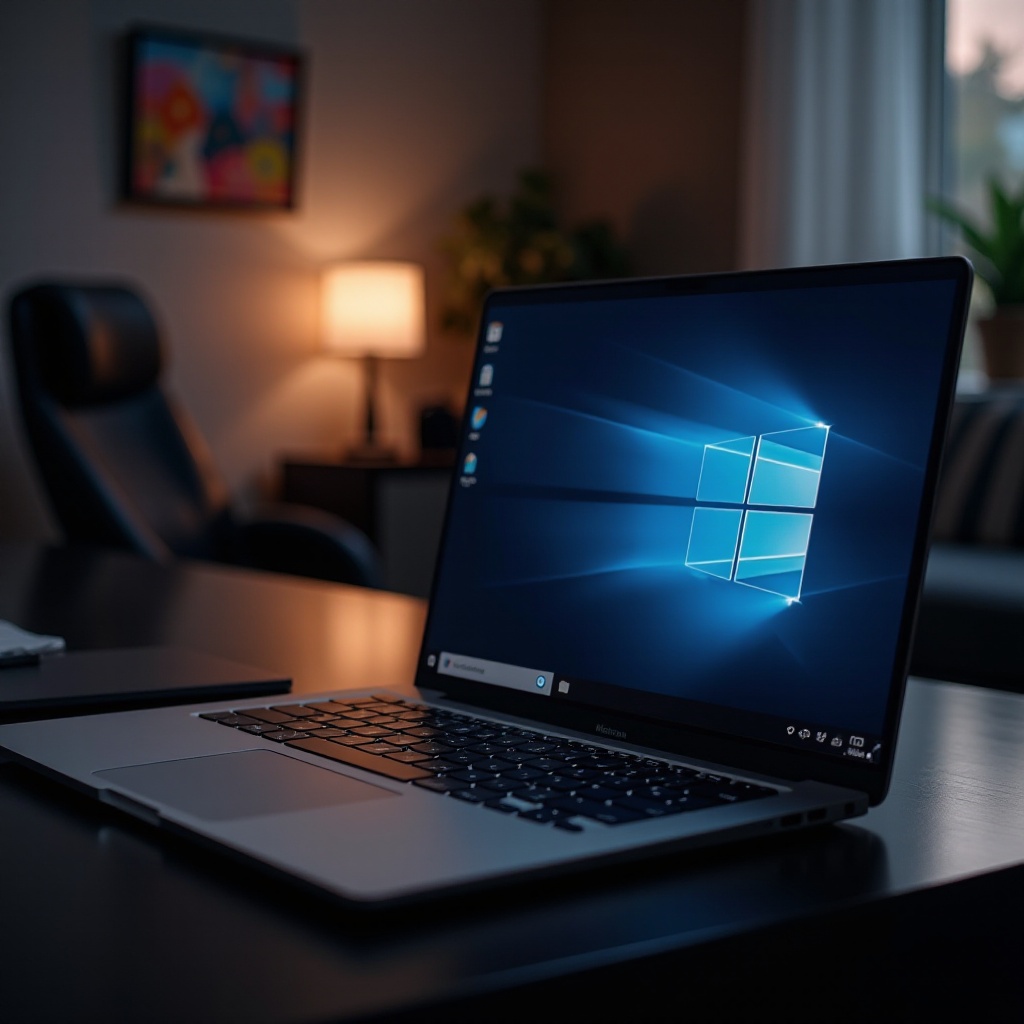How to Connect iPad to Monitor Wirelessly
Introduction
Connecting your iPad to a monitor wirelessly can dramatically improve productivity and the way you consume or present content. With multiple methods available, this guide breaks down the simple steps and offers troubleshooting tips to help ensure a hassle-free experience. By understanding these approaches, you can confidently select the method that best aligns with your specific requirements.
Wireless solutions are increasingly popular, mainly due to the reduction of cable clutter, increased flexibility, and ease of use they offer. By eliminating the need for physical cables, these solutions offer a clean and streamlined experience. Here, we delve into the advantages, tools, and methods to enhance your tech setup.

Benefits of Connecting Your iPad to a Monitor Wirelessly
Wireless connections offer multiple benefits over traditional wired options. Firstly, they reduce workspace clutter, creating a cleaner, more organized aesthetic. Additionally, the mobility offered by wireless connections is significant. Free from the constraints of cables, you can rearrange your setup as necessary, promoting a dynamic and adaptable workspace.
In terms of compatibility, most modern monitors support wireless connections, making it easy to use various devices interchangeably without needing specific ports or adapters. This flexibility simplifies the process of sharing content with colleagues and friends. Security is bolstered too, as communications occur over encrypted channels, reducing concerns about sensitive information.
Using Apple TV and AirPlay for Wireless Connectivity
For those entrenched in the Apple ecosystem, using Apple TV with AirPlay provides a reliable and efficient method for wirelessly connecting an iPad to a monitor. This approach leverages Apple’s seamless integration across devices. Start by connecting the Apple TV to your monitor and ensuring both the iPad and Apple TV are on the same Wi-Fi network. Swipe open the Control Center on your iPad, select ‘Screen Mirroring,’ and choose your Apple TV.
Apple TV offers an intuitive setup, supported by its user-friendly interface. It enables high-quality audio and video streaming, ideal for both professional presentations and leisure activities like watching movies. This reliable setup offers consistent performance across various applications, making it a popular choice among users.

Exploring Third-Party Apps for iPad Monitor Connectivity
For those without Apple TV, various third-party apps provide a viable alternative for connecting an iPad to a monitor wirelessly. These apps transform your monitor into a display for the iPad, providing a range of features and setup configurations.
Reflector
Reflector is a widely used application that turns your computer into a wireless display, allowing easy mirroring of your iPad. It supports multiple devices and is compatible with both Mac and Windows systems. Simply download and install Reflector on your computer, then use AirPlay on your iPad to initiate mirroring.
AirServer
Another powerful app, AirServer, is designed for screen mirroring and caters to diverse platforms including PCs and gaming consoles. It offers robust streaming and recording capabilities. Once installed, it pairs seamlessly with your iPad, delivering high-definition streams wirelessly.
LonelyScreen
LonelyScreen emulates the functionality of an AirPlay receiver for your computer. With its straightforward setup, users of any skill level can access its recording features for streamed content. This solution is ideal for those seeking flexibility without needing additional hardware.
Each app has unique features, so explore to find which best matches your needs. These third-party solutions provide wireless connections robust enough for intensive applications.
Utilizing HDMI Wireless Transmitters with Your iPad
HDMI wireless transmitters present another method for connecting iPads to monitors, eliminating the need for physical links. These systems replace bulky cables with compact HDMI and USB dongles. To set it up:
1. Use an appropriate adapter to connect the HDMI transmitter to your iPad.
2. Attach the receiver to the monitor’s HDMI port.
3. Power on both devices to ensure a stable connection.
The transmitter sends display information from the iPad to the monitor, simulating a direct cable connection. Such transmitters excel in settings like classrooms or business meetings where long-distance connectivity is beneficial.

How to Improve Connection Quality and Troubleshooting Tips
To ensure your wireless connection remains stable and free from lag or disconnections, follow these tips:
-
Maintain a Strong Wi-Fi Signal: Keep your devices on the same Wi-Fi network and close to the router to maintain signal integrity.
-
Reduce Interfering Devices: Reduce the number of simultaneously active Wi-Fi devices to enhance streaming quality.
-
Update Software: Regularly updating the software on your iPad and relevant apps can enhance connection reliability and compatibility.
Should issues persist, restarting your devices often resolves temporary glitches. Verify network settings to ensure both the iPad and monitor are on the same network, avoiding guest or secondary connections that might degrade performance.
Conclusion
The ability to connect an iPad to a monitor wirelessly has become more accessible than ever, thanks to options like Apple TV, third-party apps, and HDMI transmitters. Each method offers unique benefits, whether prioritizing easy setup, cost-effectiveness, or advanced features. By experimenting with these solutions, you can identify the method best suited to your environment, thereby enhancing your overall experience.
Using wireless connections liberates you from the constraints of cables, providing more ways to enjoy and utilize iPad content on larger screens. By implementing the provided tips and solutions, these advantages become achievable for all users, regardless of technical expertise.
Frequently Asked Questions
Can I use Chromecast to connect my iPad to a monitor wirelessly?
Yes, Chromecast can mirror your iPad to a monitor via apps that support casting. Use apps with native cast features, like YouTube, or third-party apps that integrate Chromecast functionality.
Are there any free apps for connecting my iPad to a monitor?
Some apps, like LonelyScreen, offer free trials or features. Free apps might have limitations in terms of quality or ads, so it’s vital to consider the trade-offs between price and performance.
What should I do if my iPad doesn’t connect to the monitor?
First, check your Wi-Fi connection, ensuring it’s stable and devices are on the same network. Restart devices and update software as needed. If issues persist, consult device support or explore alternate connectivity solutions.


